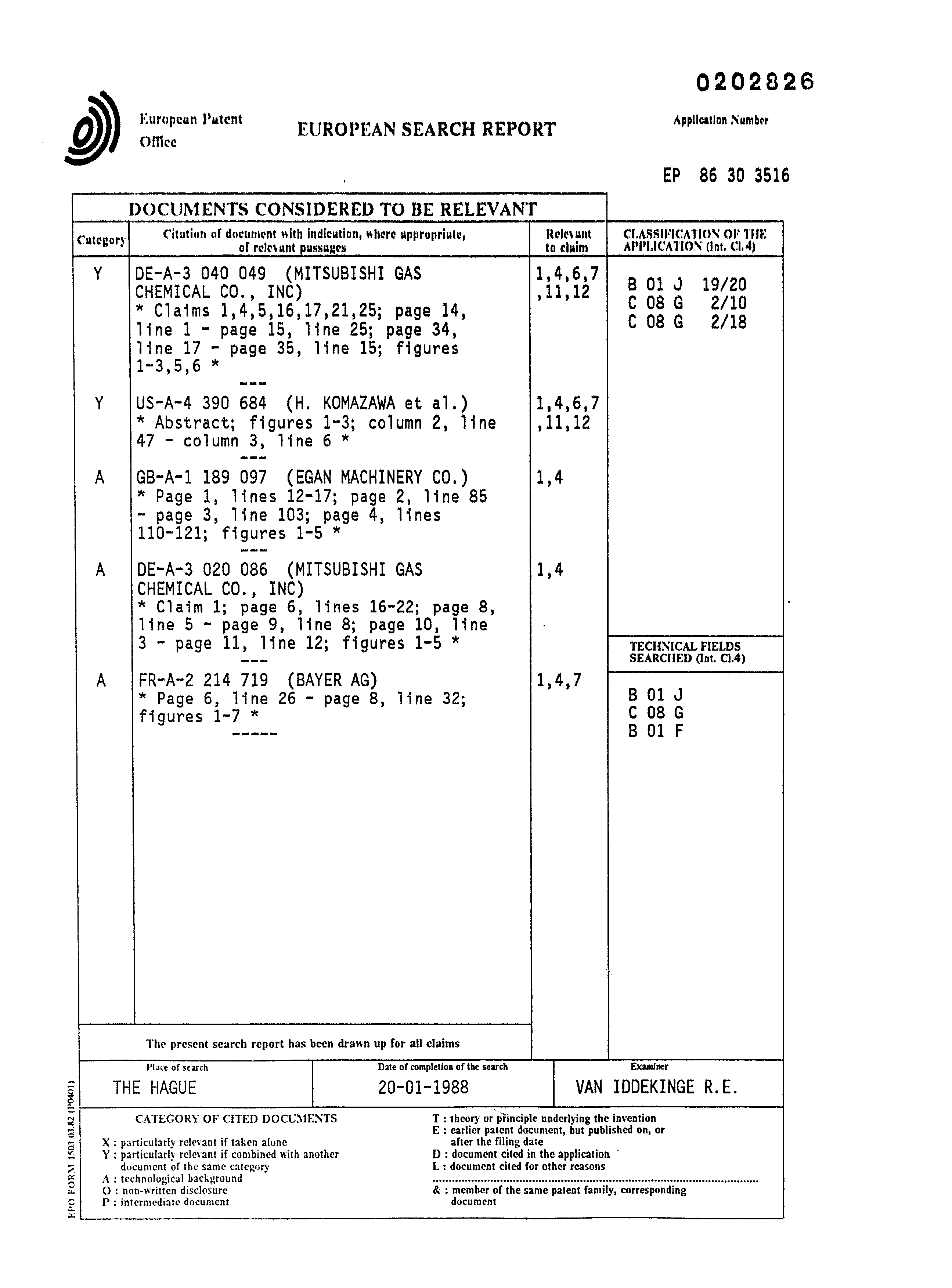| (19) |
 |
|
(11) |
EP 0 202 826 A3 |
| (12) |
EUROPEAN PATENT APPLICATION |
| (88) |
Date of publication A3: |
|
20.04.1988 Bulletin 1988/16 |
| (43) |
Date of publication A2: |
|
26.11.1986 Bulletin 1986/48 |
| (22) |
Date of filing: 08.05.1986 |
|
|
| (84) |
Designated Contracting States: |
|
BE DE FR GB IT NL |
| (30) |
Priority: |
13.05.1985 JP 10102985
|
| (71) |
Applicant: POLYPLASTICS CO. LTD. |
|
() |
|
| (72) |
Inventors: |
|
- Minamisawa, Tsuyoshi
()
- Chino, Shuichi
()
- Goto, Noboru
()
- Nakamura, Masaaki
()
|
|
| |
|
| (54) |
Method of continuous manufacturing of polymers or copolymers of trioxane |
(57) The present invention starts out from the provision of a method of and an apparatus
for the continuous manufacturing of polymers or coplymers of trioxane using a continuous
stirring-mixing apparatus composed of two mutually parallel rotational shafts, with
a large number of paddles mounted on each, and a barrel having an internal wall surface
as described by the circular circumference traced during the rotation by the outer
peripheries of respective pairs of paddles, the said barrel having a cross-section
in the shape of two circles coaxial with the two rotational shafts and said apparatus
being provided with a jacket for temperature control on the outer periphery of the
barrel, in which apparatus polymerization or copolymerization reactions are carried
out, while stirring a mixture of trioxane, catalyst, other copolymerizable comonomers
(as may be the case), and additives, by rotation of the aforementioned shafts in mutually
opposing directions, the mixture being continuously fed through the feed supply port
at one end thereof, and the fine granules of polymers or copolymers so formed being
removed through the discharge port provided at the other end.
From this starting point the method, as well as the apparatus, of this invention is
characterized in that on the contra-rotating shafts there are disposed one or more
sets of paddles each having a lobed shape, with an elliptical periphery, which shape
meets the requirement that the clearance beween each set of paddles, which are disposed
opposite one another, one on each shaft, is always kept at less than 3% of the inner
diameter of the part-cylindrical barrel; and wherein the set of paddles opposite each
other on the two shafts are contra-rotated in such manner that the clearance between
the part of each paddle farthest from the rotational axis of that paddle and the inside
wall surface of the barrel is always kept at less than 3% of the said barrel inner
diameter.

